Creating an effective email is all about striking the perfect combination of an engaging subject line, interesting copy with valuable content, and attractive visuals to support the text.
The human mind is programmed in such a way that we can easily consume visual information 60,000 times faster than plain text alone. Moreover, it is easier to remember information presented as pictures rather than words. It’s no wonder, then, that 49% of marketers rate visual marketing as “very important” for their marketing strategy. The same can be applied to email marketing.
Visuals are no longer limited to static images. They have expanded to illustrations, 3D images, GIFs, cinemagraphs, isometric illustrations, APNGs, and videos in emails. Most email marketers try to think outside of the box. They regularly use a combination of these elements in their email marketing campaigns.
Before we discuss the different types of images in emails, let’s try to understand why visuals play such a crucial role in email marketing.
- Visuals will keep readers engaged.With so many things competing for their attention, your subscribers are likely to scan and skim through your emails rather than read them. Therefore, you must make sure that your email is visually appealing enough to hold the reader’s attention and encourage them to take action.
- Including relevant visuals will facilitate communication.The right kind of visuals will make it easy for the users to instantly understand the crux of your email. It will leave a more profound impact on your audience and increase the likelihood of conversions.
- Relevant visuals will take the user experience to the next level.When you add attractive imagery in the emails, it enhances the customer experience. It will make your emails more shareable and increase the email forwarding rate, too. Who knows, your email might even go viral!
6 types of visuals to include in your email marketing campaigns
Now, let’s delve deeper into the different types of visuals that you can use, starting with images.
Subscribe to
The Content Marketer
Get weekly insights, advice and opinions about all things digital marketing.
Thank you for subscribing to The Content Marketer!
1. Images
HTML coding has made it possible to add images and background colors in your emails, making them more effective for readers. By adding relevant images, you can avoid a long copy and convey more information in the limited space available.
eCommerce email marketers and e-retailers must use images in the emails to display their products and yield a higher conversion rate.
Take a look at this email by Saks Fifth Avenue, in which they displayed their summer staples to entice users to refresh their wardrobes.
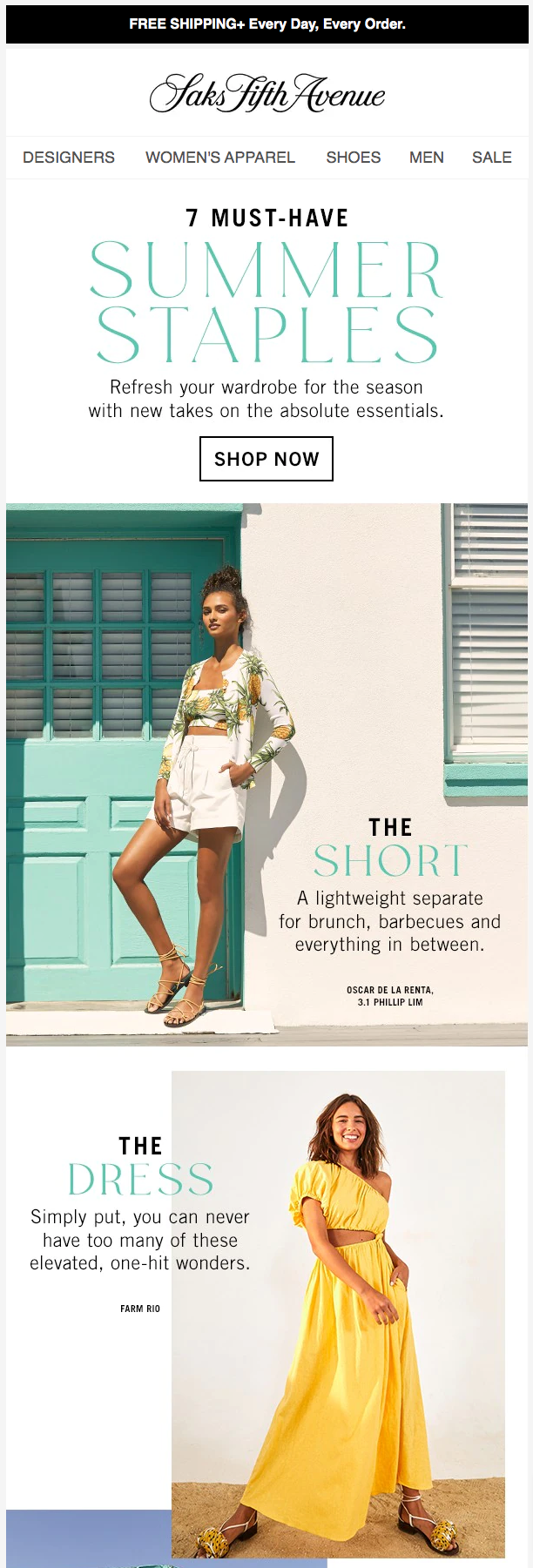
3D images are another type of static imagery that can be used in emails. This type of image was first developed in the 1970s. Gradually, it made its way into the world of email designing, after gaining immense popularity in web designing.
Take a look at this example by Envato.
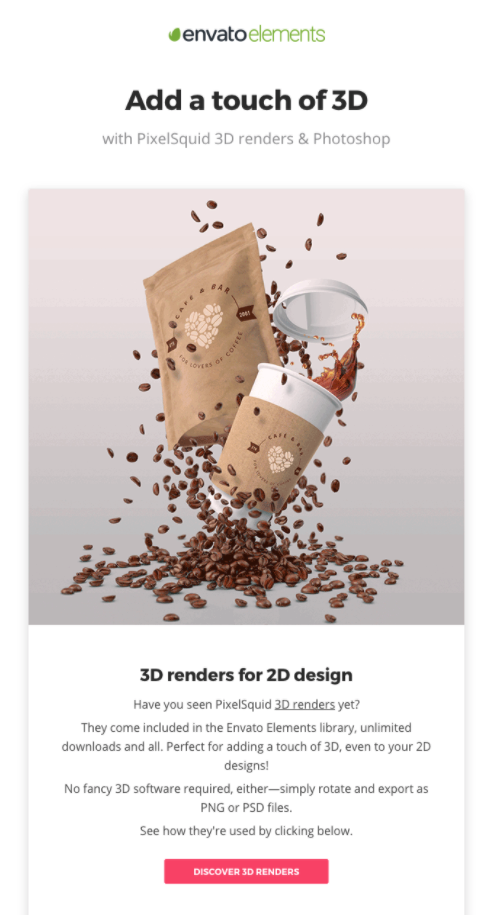
If you still want to enhance the user experience with static images, illustrations are the answer.
Email Uplers incorporated a beautiful use of isometric design to explain their email template production process. Also, notice how we used off-grid graphic elements, bold typography, and a combination of 3D aesthetics with flat design.

2. GIFs or Animated Images
Another visual element that can make your emails stand out in the subscriber’s inbox is GIF animations. These animated images consist of several dynamic frames repeating in a loop.
In 2014, Dell generated 109% revenue by using GIFs in emails. That goes to show the power of using animation in email marketing campaigns.
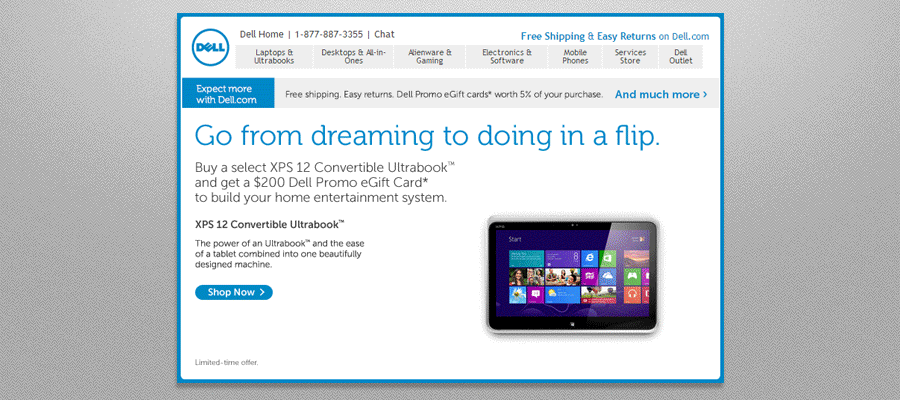
You can use GIFs in a number of ways in your email campaigns. For example:
1. Travel industry email marketers can use animations to inspire wanderlust in their subscribers.
2. eCommerce industry marketers can showcase different types of products through GIFs without making the email too lengthy for readers.
3. B2B or SaaS companies can use GIFs to demonstrate how their products or services are used. Here’s an example to inspire you:
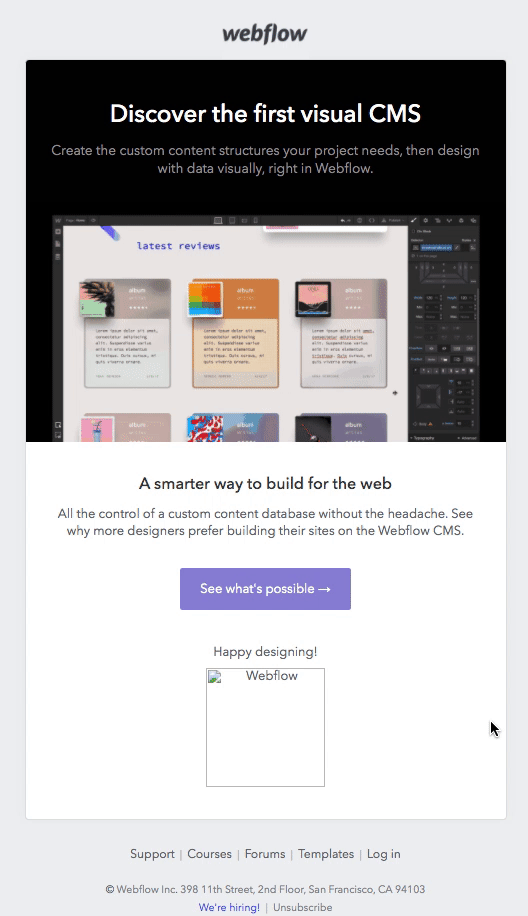
4. Marketers can also use animations in their triggered occasion-based emails to convey their warm wishes to the subscribers, like Paper Source has done.

5. GIFs can also be used for creative branding purposes. To take your GIF animations to the next level, you can use 3D images like Lyft does.
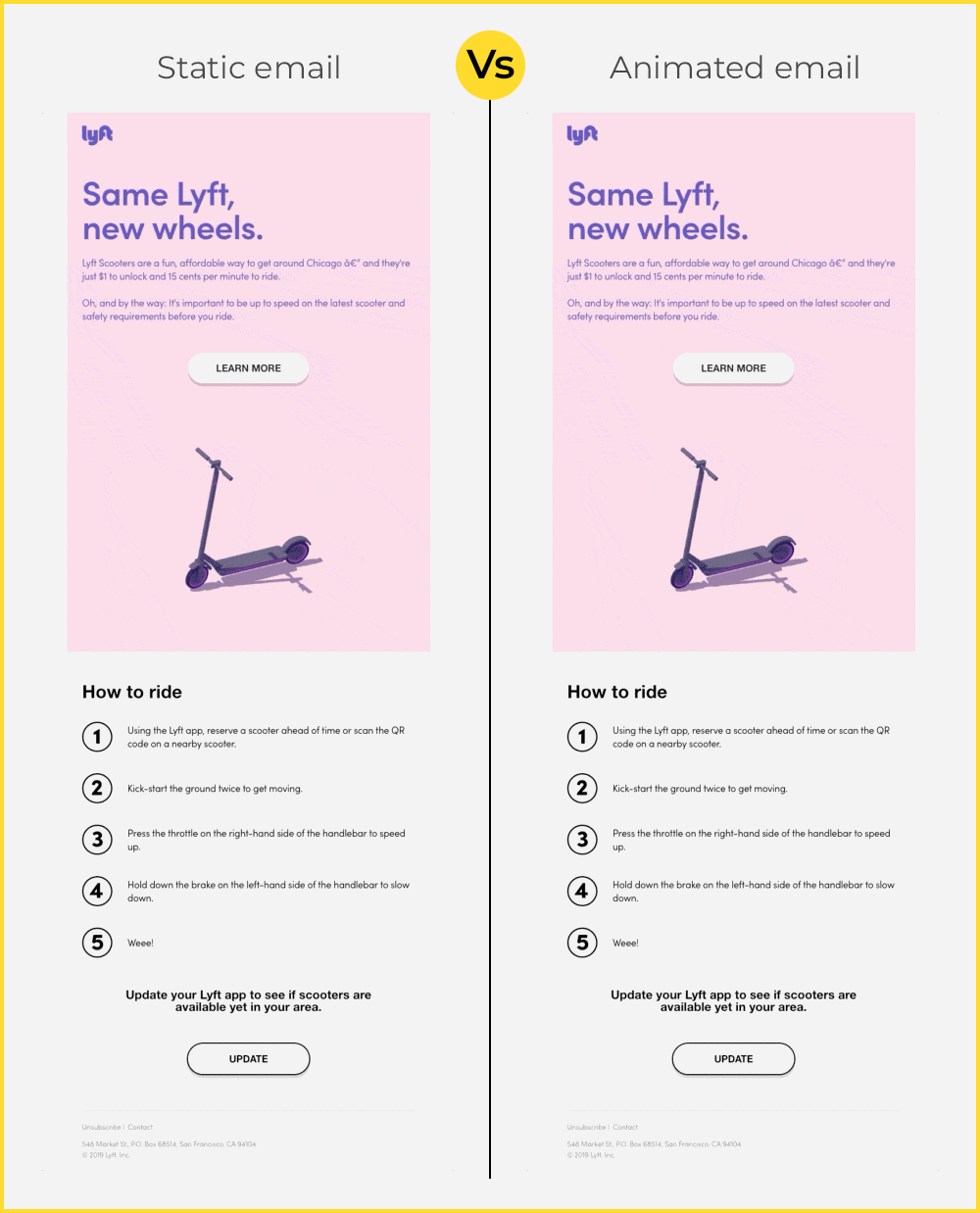
3. Cinemagraphs
Cinemagraphs are similar to GIFs. The only difference between the two is that GIFs are short snippets taken from a video while cinemagraphs emulate a seamlessly endless loop. This visual element creates a surreal experience for readers and takes them back to that moment lost in time.
For instance, this cute cinemagraph is sure to bring a big smile to your face.

Take a look at this email by Netflix, in which they have added a beautiful cinemagraph to launch their original series Fate: Extra Last Encore. If you are an email marketer in the telecommunications industry, you can certainly use similar innovative visual marketing ideas.

4. Videos
The crème de la crème of visuals in emails is a video. You can use it in two different ways, namely:
i. Add a thumbnail image of the video with the play button in the email. By clicking the image, the user will be redirected to the landing page.
The New York Times has used this method and added a thumbnail image with GIF animation in their email. Once the users click it, they will be redirected to the respective page on the NYT website.
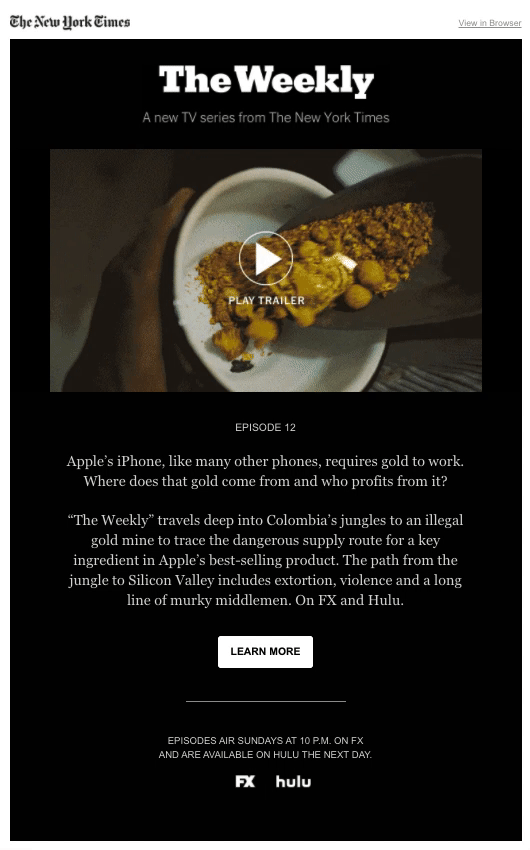
ii. Embed a video in the email itself. The subscriber can view it without having to visit any web page.
Here’s how Hulu has done it in an email to promote their new series, Castle Rock.
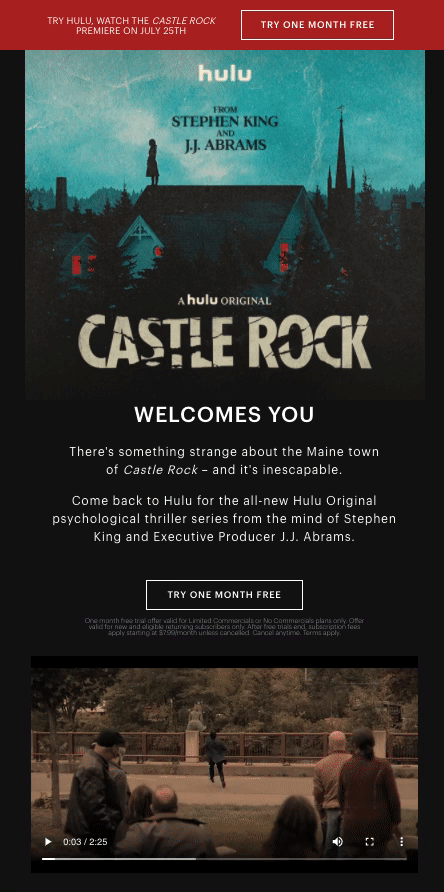
You can use tools like Vidyard and Hippo Video to send out personalized videos in emails. This will, in turn, help you to yield better conversions.
It is a great idea to include a video in your event invitation email. You can either use it to show a teaser of the previous year’s event or the venue where it will be held. In case you want to get more views on your YouTube channel, include a snippet video or thumbnail image in the email rather than embedding the entire video.
5. APNGs
APNGs share some major similarities with GIFs. The only difference being that APNGs have a higher resolution and better image quality.
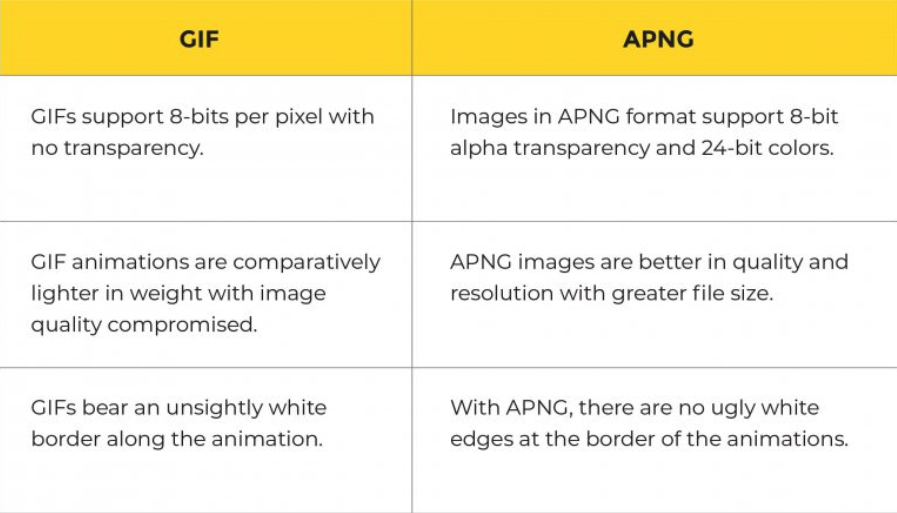
Despite that, it does not affect the loading speed of the email and maintains optimum image size. If you are not satisfied with the appearance of GIFs, APNGs are the safest bet for you.
The image below demonstrates the difference between GIF and APNG to a T.
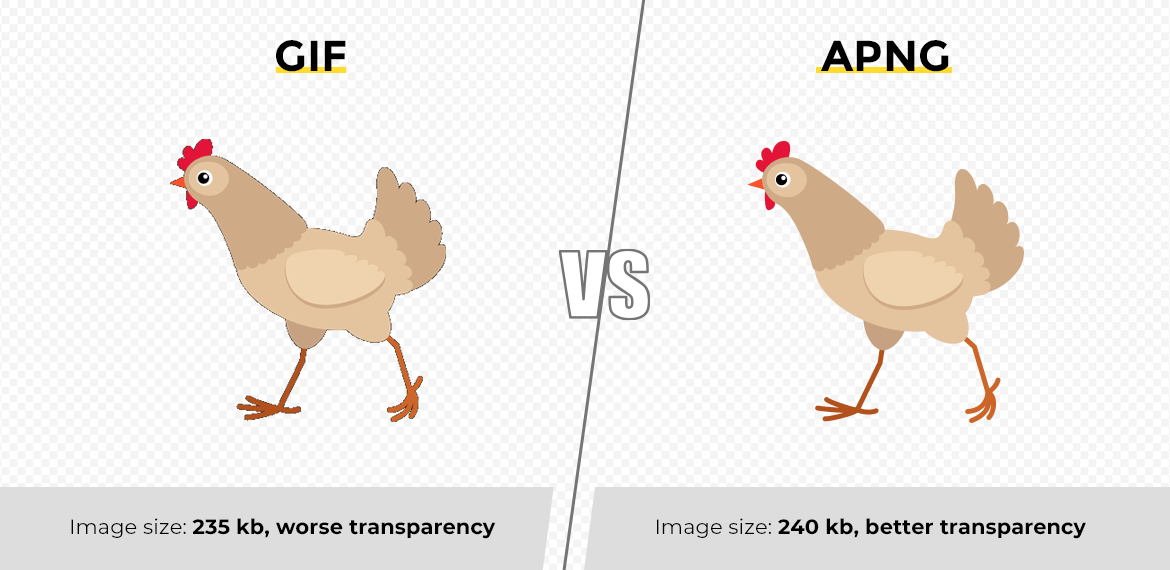
Another advantage of APNGs in emails is their compatibility with almost all the popular email clients, except Outlook.com (Windows), Gmail, and Gmail App.
Here is an example of an APNG email by Email Uplers.
Source: https://email.uplers.com/edm/journey/journey.html
6. Infographics
Last but not least, infographics are a key resource that you need to consider when working on an email marketing campaign.
This type of image consists of a collection of graphics, charts, illustrations, and text. To put it simply, infographics are structured collages of images and words.
The way infographics present information makes them easier to understand and, evidently, more attractive. In fact, infographics are 30 times more likely to be read than content that consists only of text.
Therefore, using infographics in email marketing is an effective way to convey a message that otherwise would be too wordy or hard to follow.
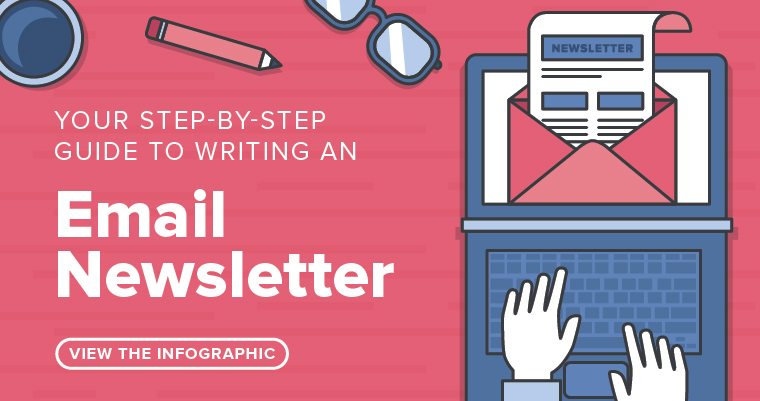
A step-by-step guide to buying on your e-commerce site, an explanation of your production process, or even an overall introduction to your product categories could look amazing as an infographic.
If you decide to give infographics a go in your email marketing efforts, just take into consideration their length. If you send an especially long infographic, your readers will be caught in an endless scroll, and probably won’t even make it to the end.
In case you have a lot to say, don’t clip your wings! Remember you can always send a sneak peek with a link to your site. Once the users click on the preview image, they will be redirected to the full infographic.
Points to remember while using visuals in emails
- Do not use stock photographs. Instead, you must go for creative images or real photographs in your emails.
- Never send an all-image email, otherwise, it will hamper your sender reputation by triggering spam filters.
- Maintain the image-to-text ratio at 20:80.
- Do not add any important information or CTA in the rich media elements of the email.
- Email clients keep the images blocked by default. Therefore, every image must be accompanied with a relevant alt-text. This is also important from an accessibility standpoint, as it will facilitate screen readers to convey your message properly.
- While sending out emails with GIFs, make sure to keep the flashing rate of animations outside of the 2-55 Hz band. Otherwise, it could aggravate the condition of photosensitive epilepsy in readers affected by that condition.
- Make sure that the visuals do not cause the emails to load slower.
- Have ample white space in the emails and avoid adding too many visuals.
- If you are embedding the video right in the email, provide a suitable fallback for the email clients that do not support that functionality.
- Lastly, follow all the email design best practices, including all the principles of visual hierarchy, accessibility, and responsiveness.
Wrapping Up
You must be familiar with DIY email template builders if you’re a savvy email marketer. However, you must remember that if you want to send out impressive emails, you must design custom email templates prepared from scratch.
These tips will surely come in handy to help you in effective visual email marketing.





